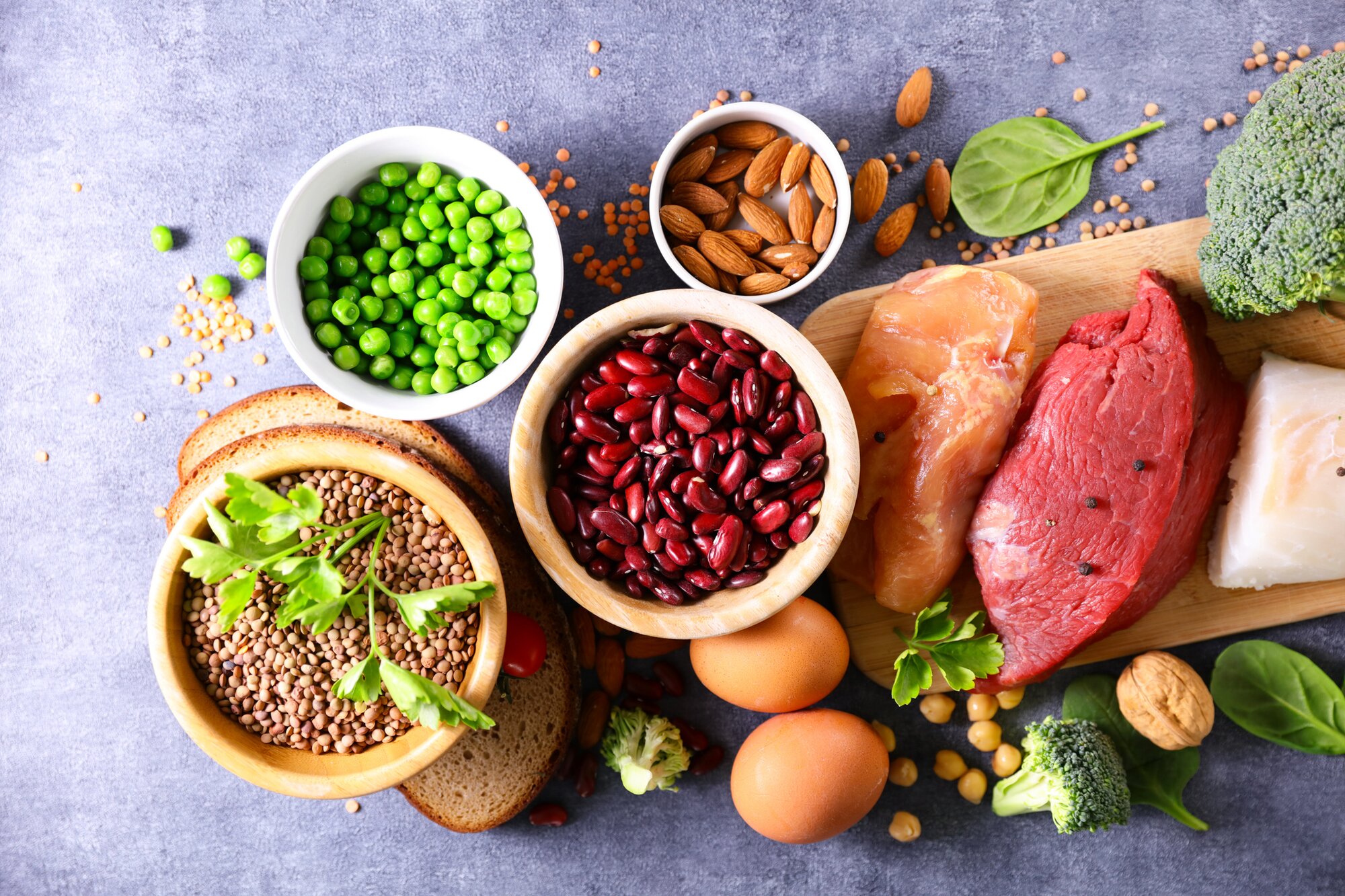Last Updated: 04/07/2025
The Benefits of Fresh Dog Food
Our vet authored guide to the benefits of feeding your dog fresh food plus tips and advice for introducing it into their regular menu.
Author: Dr Teagan Lever BVSc (Hons)
Reading Time: 442 minutes - extensive read
One of the most common topics veterinarians receive questions about is diet; Pet owners universally want the best for their furry family members, and navigating the world of dog food can feel a bit like deciphering a secret code sometimes! In this article we'll cover some of the potential benefits of incorporating fresh, chilled, or frozen food into a dog's diet.
Now, before diving in, let's be clear: commercial kibble has come a long way, and for many dogs, it provides an excellent primary source of nutrition. As we learn more about human and pet nutrition and the way what we eat works with our bodies, it's only natural that pet parents are keen to understand more about whether fresh or raw food might be a good fit for their dog.
So, what are the potential perks of adding fresh food to a dog's bowl, and what does the science say? Let's explore!
The benefits of feeding fresh

The power of palatability: making mealtime exciting!
Let's be honest, some dogs are just… not enthusiastic eaters. If a dog turns their nose up at kibble, or an owner finds themselves constantly trying to entice them, fresh food can be a game changer. The natural aromas and textures of fresh ingredients are often far more appealing. Happy mealtimes mean a dog is more likely to consume the nutrients they need, which is a win in any vet's book!
While "palatability" might sound anecdotal, it's a real factor in canine nutrition. A dog that enjoys their food is less likely to be finicky, ensuring consistent nutrient intake.
Gut feeling: supporting a healthy digestive system
A healthy gut is the cornerstone of overall health, and this is true for dogs too. Fresh food diets, particularly those rich in diverse whole ingredients, can contribute to a more balanced and thriving gut microbiome. The natural fibres present in fresh fruits and vegetables act as prebiotics, feeding the beneficial bacteria in a dog's gut. We know in people that a robust and diverse microbiome can lead to better digestion, improved immune function, and even better mood.
While the research on the canine gut microbiome is ongoing, studies in humans and animals consistently show the positive impact of whole, unprocessed foods on gut health. Diet plays a significant role in shaping the canine gut microbiome, with diets containing diverse ingredients potentially promoting greater microbial diversity1. This translates to more comfortable digestion and potentially fewer issues like upset stomachs or irregular bowel movements for a dog.
Research has shown that diet significantly impacts the canine gut microbiome1,2. While there are a handful of studies suggesting fresh or raw diets cause shifts in microbial diversity and composition compared to kibble, the long-term implications of these microbial changes are still yet to be understood.
The integrity advantage: health benefits from minimal processing

Beyond just what your dog absorbs from their food, there's a bigger picture to consider: how the food's journey from farm to bowl affects its overall "goodness." Highly processed pet foods, like many kibbles, go through intense heat and pressure during manufacturing. While necessary for safety and shelf-life, this processing may have some unintended consequences.
Think of it like overcooking your own food – sometimes the intense heat can alter important nutrients or create new compounds. In pet food, this intense processing can unfortunately lead to:
- Damaged Nutrients: Delicate vitamins, healthy fats, and even some proteins can be altered or reduced by extreme heat, making them less beneficial for your dog. This is typically counteracted in traditional pet foods by ensuring a surplus of heat sensitive nutrients in the formulation to compensate for anticipated losses, as well as top dressing kibble after extrusion3.
- Undesirable Byproducts: High heat can create substances like Advanced Glycation End-products (AGEs)4. These are compounds that, when consumed regularly, might contribute to inflammation in the body over time. Less processed foods tend to have far fewer of these.
This is where fresh, minimally processed food shines! Because it undergoes gentler preparation, more of the original nutrients stay intact. Plus, it's less likely to form those potentially irritating byproducts.
What does this mean for your dog? It's possible that dogs eating fresh or less processed diets might show lower levels of inflammation in their bodies and less "oxidative stress" – which is like cellular wear and tear. Essentially, their bodies might be under less biological stress, however it's important to note that further research is needed to validate this.
Hydration hero: boosting water intake
Many fresh pet foods have a higher moisture content compared to traditional dry kibble. This is a subtle but significant benefit, especially for dogs who aren't big drinkers. Adequate hydration is vital for kidney function, joint health, and overall bodily processes. By incorporating fresh food, owners are stealthily increasing their dog's water intake, which is always a good thing! The higher moisture content in fresh foods directly contributes to overall hydration status, which is essential for numerous physiological functions.
Is fresh a good fit for your fur family?

While the full, long-term benefits of fresh dog food are still being extensively studied, it's clear these diets can offer significant advantages for many dogs. When you're considering adding fresh food to your pet's bowl and choosing a product, it's really important to think about their individual needs. Does your dog have specific health conditions that require a therapeutic veterinary diet? Do they have known sensitivities to certain ingredients or specific weight management needs? Always ensure any chosen fresh product complements or aligns with these existing dietary requirements. If your vet has already recommended a therapeutic diet for your pet, always check with them before making any changes or adding new foods.
It's also crucial to consider the potential health risks associated with raw fresh diets. Raw dog foods are generally not recommended for households with small children and elderly individuals, as well as pets and people with compromised immunity such as those undergoing chemotherapy. This is due to the risk of transmitting harmful bacteria like Salmonella or Campylobacter. The good news is that if you're looking for the benefits of fresh food without this specific risk, gently cooked fresh products offer a fantastic alternative, providing the same nutritional advantages in a safer format for all household members.
Making the switch: a balanced approach
For most dogs, a "mixed feeding" approach can be a fantastic way to introduce the benefits of fresh food without a complete overhaul. This means continuing with a high-quality kibble as their base and supplementing with a portion of chilled or frozen food.
A few important considerations:
- Balance is Key: If considering a fully fresh diet, it's crucial to ensure it's nutritionally complete and balanced for a dog's age, breed, and activity level.
- Gradual Introduction: Just like with any dietary change, introduce fresh food gradually over several days to avoid digestive upset. Start with small amounts and slowly increase the proportion.
- Storage and Handling: Fresh food requires proper storage and handling to prevent bacterial contamination. Always follow the manufacturer's guidelines for thawing and serving.
The bottom line
Adding chilled, or frozen food to a dog's diet can be a wonderful way to boost their well-being, enhance their mealtime enjoyment, and potentially offer improved nutrient absorption, positive gut health changes, and even reduced inflammation. It's not about being "all or nothing," but rather about exploring ways to enrich their diet for a healthier, happier life.
References
Handl, S., et al. (2013). "The Canine Gastrointestinal Microbiome: A Review." Veterinary Clinics of North America: Small Animal Practice, 43(6), 1183-1193
Swanson, K. S., et al. (2018). Fresh and raw diets for dogs may have health benefits, study says. ScienceDaily. Retrieved from https://www.sciencedaily.com/releases/2018/08/180823171030.htm
Tran, Q. D., Hendriks, W. H., & van der Poel, A. F. B. (2008). Effects of extrusion processing on nutrients in dry pet food. Journal of Science of Food and Agriculture, 88(9), 1487-1493.
Wang, W., et al. (2024). Commercial Fresh Pet Food Diets. Today's Veterinary Practice. Retrieved from https://todaysveterinarypractice.com/nutrition/commercial-fresh-pet-food-diets/
Further Reading
Learn about novel protein diets, their health benefits, and how they cater to pets with specific dietary needs.
Learn how you can improve your senior dog's health, longevity and quality of life simply by switching them over to a senior dog food
Wondering which grain-free food is best your dog or puppy? Find out what our vets recommend
Could your dog benefit from a probiotic? Read our vet authored guide to learn more.
Take a look at the pros and cons and safety tips around raw bones from our vets.
What makes a pet food 'natural'? Learn what the benefits of a natural diet is for your dog.
History
Our experts continually monitor the health and wellness space and we update our articles when new information becomes available.
Tue Feb 11 2025
Edited by Dr Teagan Lever BVSc (Hons)Dr Teagan Lever BVSc (Hons)
Head Veterinarian, BVSc (Hons)
Pet Circle's Head Veterinarian, Dr Teagan graduated from the University of Queensland in 2010 and went on to work in small animal and mixed practice in various locations around QLD & ACT before joining Pet Circle in early 2016. Dr Teagan has special interests in dermatology, nutrition and preventative health care. She feels privileged to witness the special bond people share with their pets on a daily basis and enjoys forming lasting relationships with pet parents and their fur children.

